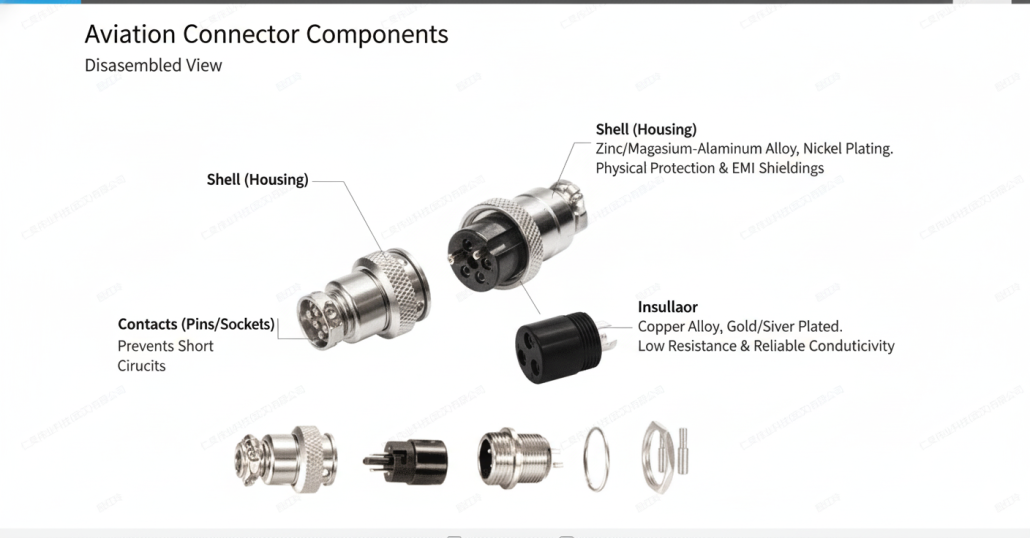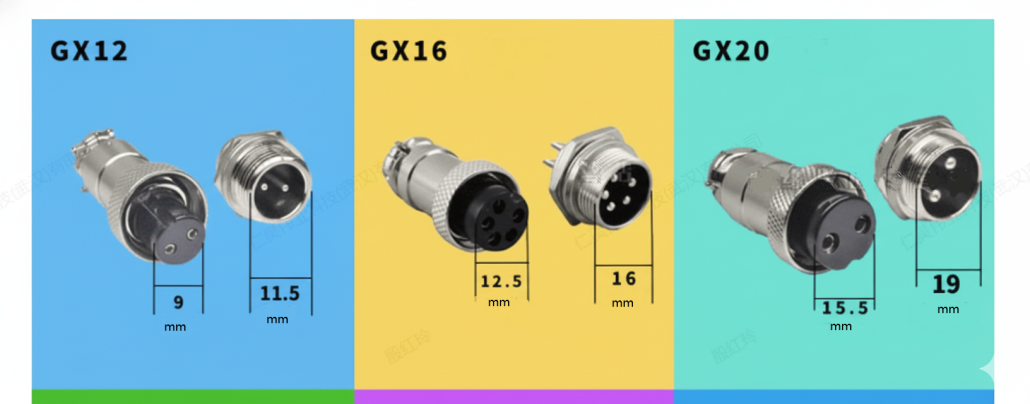M Series Connectors
Are lightweight triplestart ratchet coupling type connectors designed for avionics, aerospace, Harsh Environment Connectors, security, motorsport and heavy duty applications.
Aviation connectors, also known as Harsh Environment Connectors plugs, is aviation connector, i.e., cable connector. The number of cores is different, and the size is variable. But basically, they are metal housings with screw fasteners for the plugs and sockets. They can be fixed and secured when connected and will not come off.
It is in use and named on aircraft. It finds widespread use in navigation, aerospace, and electrical applications. The housing material is usually made of strong and durable magnesium-aluminum alloy. Sockets and plugs are complementary. The main difference is that one is male and the other is female.
Airline socket is called, respectively, airline plug, connector, connector, airline plug, etc. Their main function is to connect easily. They are mainly for signaling and power connections. Push-pull self-locking and threaded screw connections are available. The protection level is IP44, IP55, IP65, IP67, IP68, and IP69. The higher the protection level, the better the waterproof performance, generally used in various communication equipment and instrumentation.
The only difference is that the air plug is suitable for industrial electricity use. This is because it bears a higher voltage. Some consist of high-voltage electrical conversions that only air plugs can satisfy. The general power plug can not meet the voltage requirements.

Unlike standard consumer plugs, aviation connectors are built to withstand harsh environments. A typical aviation plug consists of three main parts:

The connection is secured using a threaded coupling (screw-on) or a push-pull latch, ensuring the plug never falls off, even under heavy vibration.
When selecting an aviation connector for your project, you must consider the electrical specifications. Below is the standard parameter table for common aviation plugs (like the GX Series):
| Parameter | Specification (Common Standards) | Why it Matters? |
|---|---|---|
| Rated Voltage | 125V – 400V | Determines the maximum voltage before insulation breakdown. |
| Rated Current | 5A – 30A | Ensure your device’s current does not exceed this limit to prevent overheating. |
| Contact Resistance | < 0.005Ω | Lower resistance means better signal transmission quality. |
| Insulation Resistance | > 1000MΩ | Prevents leakage current between pins. |
| IP Rating | IP55 – IP67 | Indicates protection against dust and water (Essential for outdoor use). |
| Temperature Range | -50°C to +70°C | Ensures operation in extreme cold or heat. |
Pro Tip: For multi-core connectors (e.g., 5-pin or 8-pin), always apply a derating factor. If a single pin is rated for 50A, a 5-pin cluster should be run at approx. 33% lower current per pin to manage heat buildup.

Shield and Unshield Connector

Aviation plugs are everywhere today. What are the benefits of using aviation plugs?
If an electronic component fails, equipped with an aviation plug can quickly replace the failed components.
The use of aviation plugs simplifies the assembly process of electronic products and also simplifies the process of mass production.
As technology advances, it is possible to replace new parts when equipping air plugs, replacing old parts with new, more complete ones.
The use of aerial plugs allows engineers to design and integrate new products, as well as the use of components to form the system. There is greater flexibility because the structure of the aerial plug is increasingly diverse, new structures and applications continue to emerge, and trying to use a fixed model to solve the problem of classification and naming, has appeared difficult to adapt.
The GX Series is the most popular line of aviation connectors in the market. Renhotec offers factory-direct GX connectors with superior build quality.
Comparison of GX Models:

Looking for high-quality connectors?Browse All GX Aviation Connectors
Q: Are all aviation connectors waterproof?
A: Not automatically. Standard GX connectors are typically IP55 rated (dust protected and splash-resistant). If you need fully submersible connectors, please look for our IP68 Waterproof connectors.
Q: How do I distinguish between the plug and the socket?
A: Generally, the piece with the pins (Male) is the Plug, and the piece with the holes (Female) is the Socket. However, aviation connectors often come in “Free Cable” or “Panel Mount” versions.
Q: What is the difference between GX16-4 and GX12-4?
A: Both have 4 pins. The difference is the mounting hole size. GX16 requires a 16mm diameter hole, while GX12 fits a 12mm hole. GX16 can also handle slightly higher current.